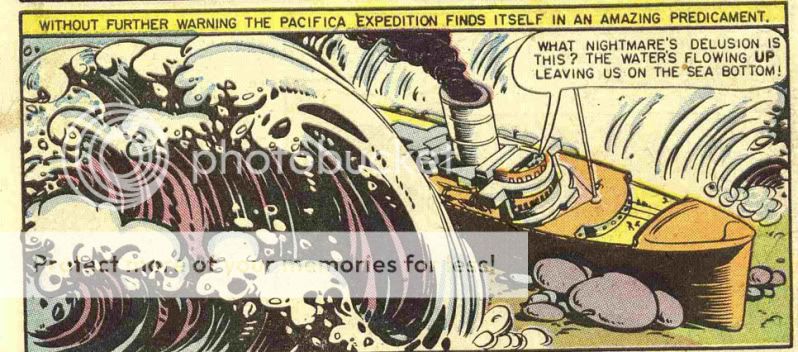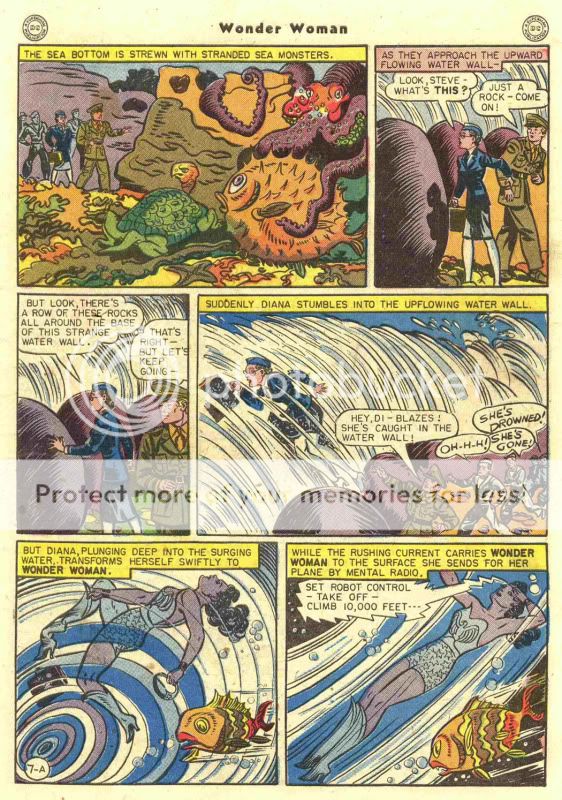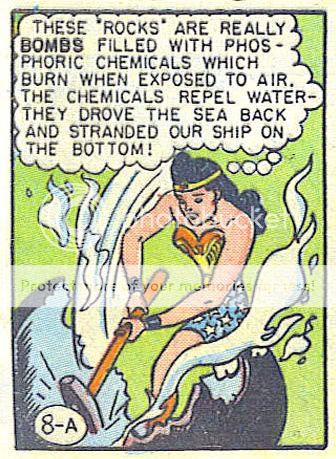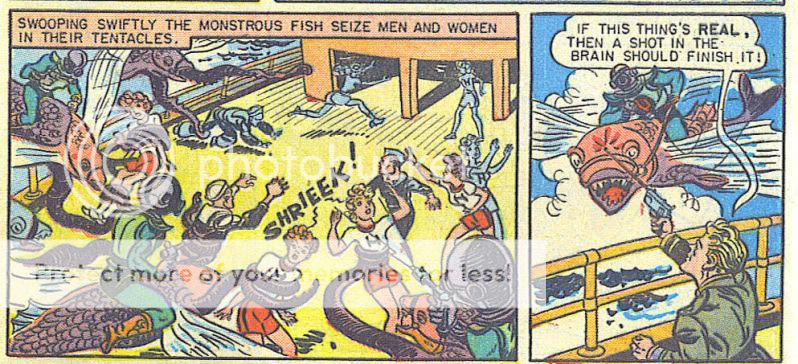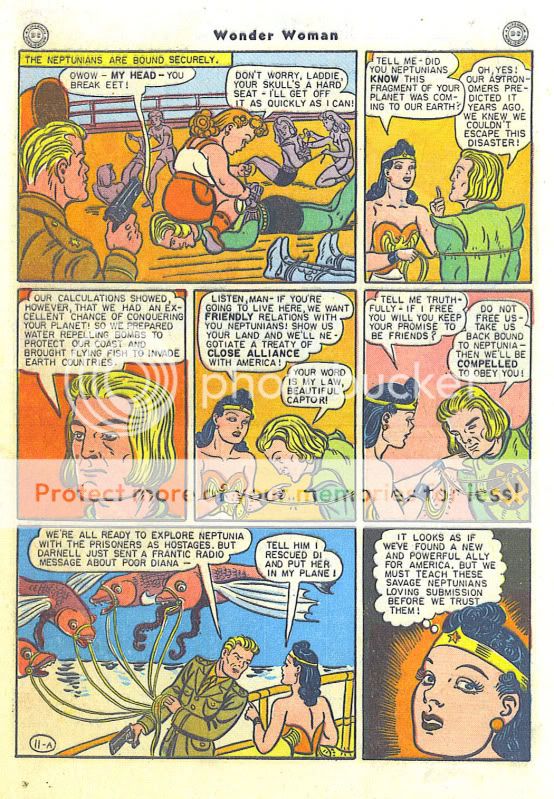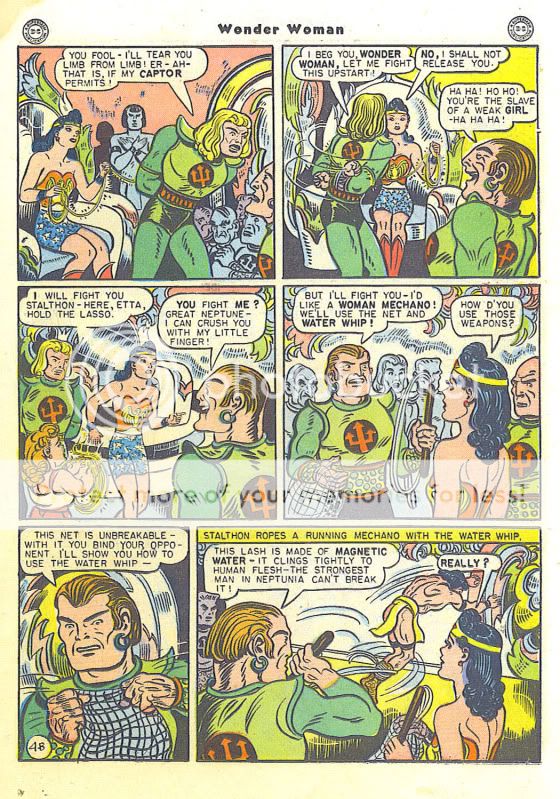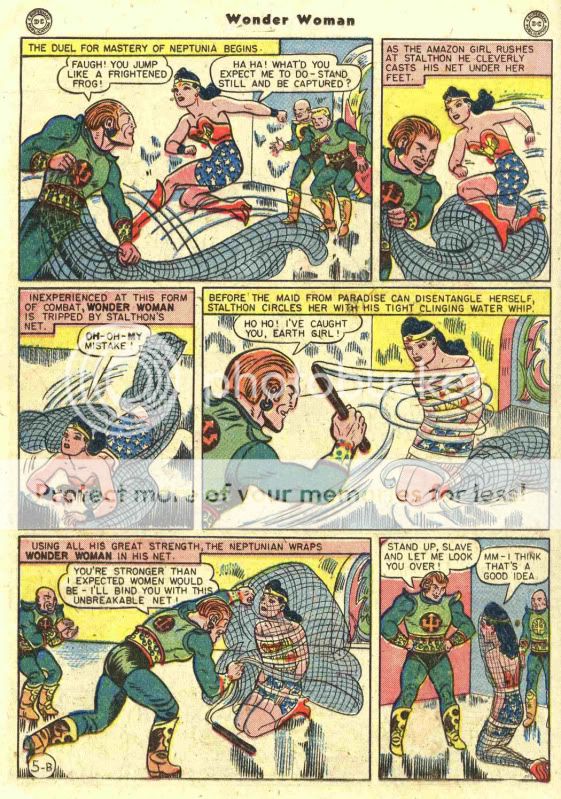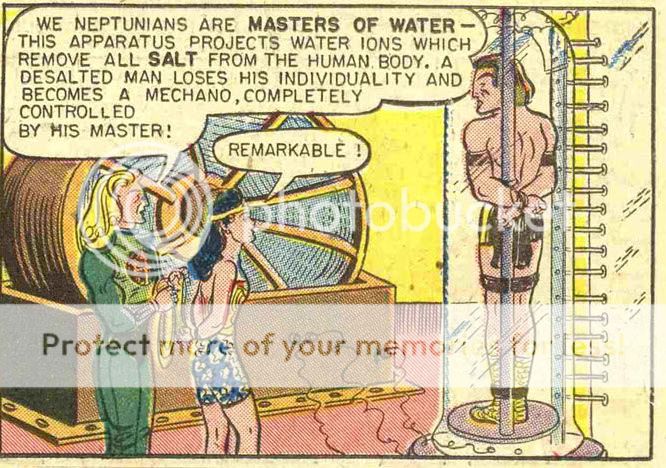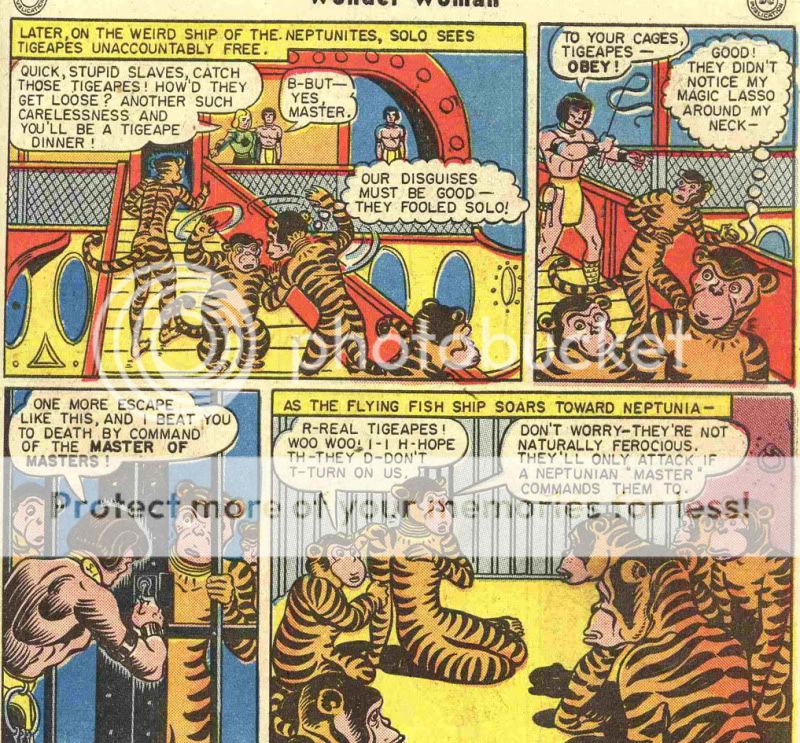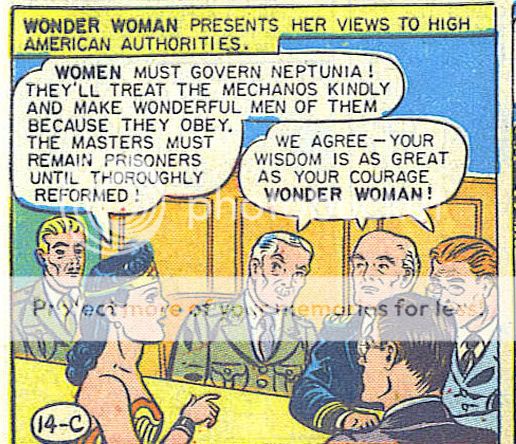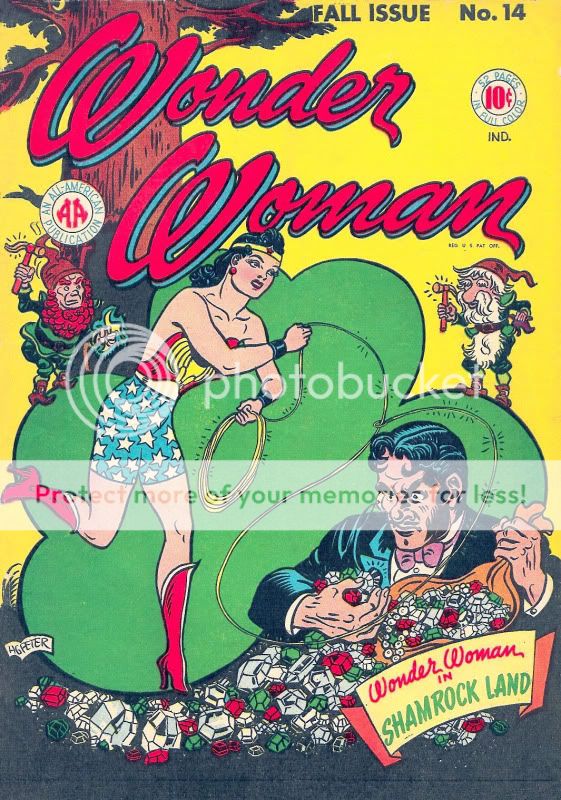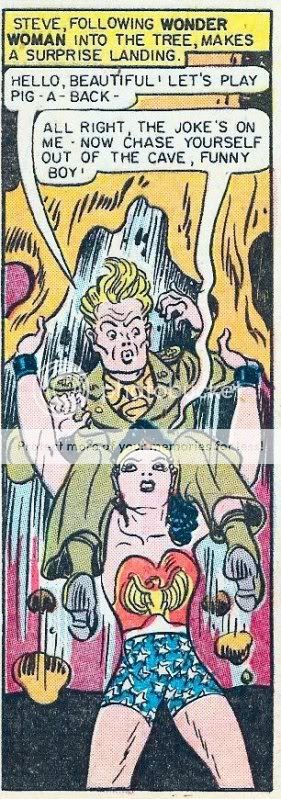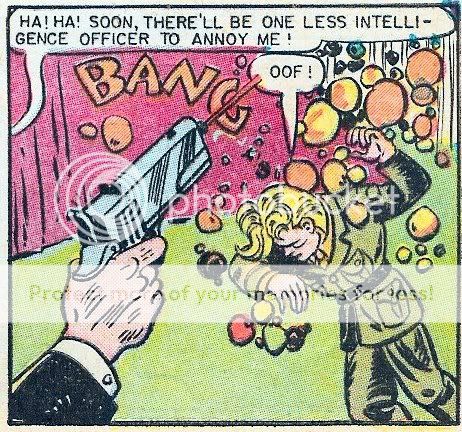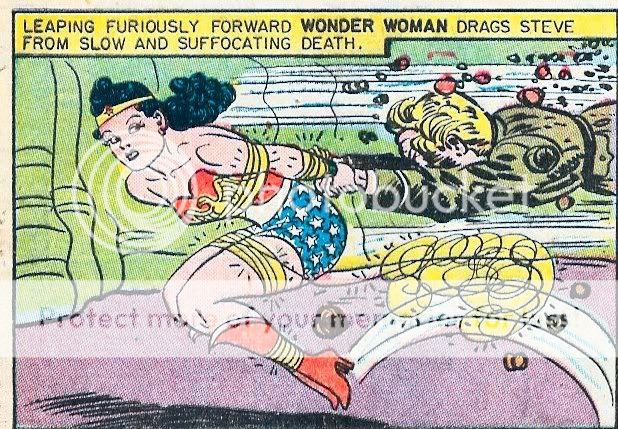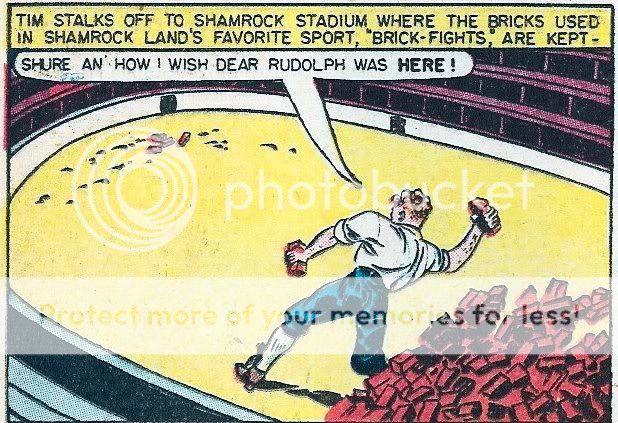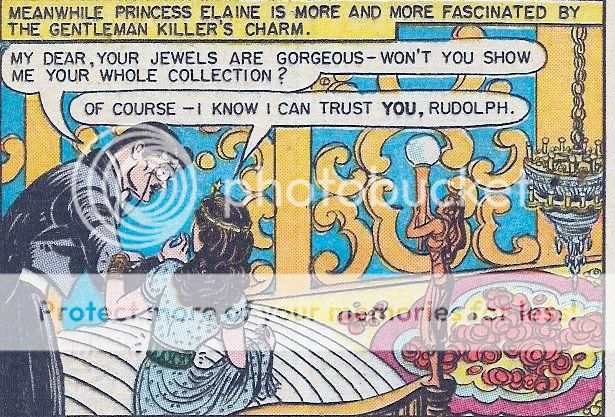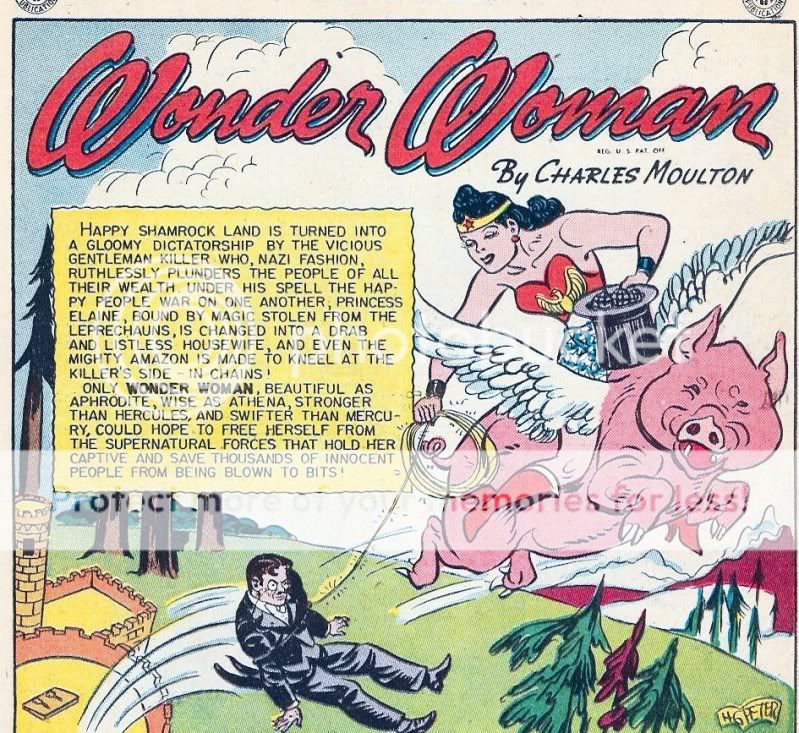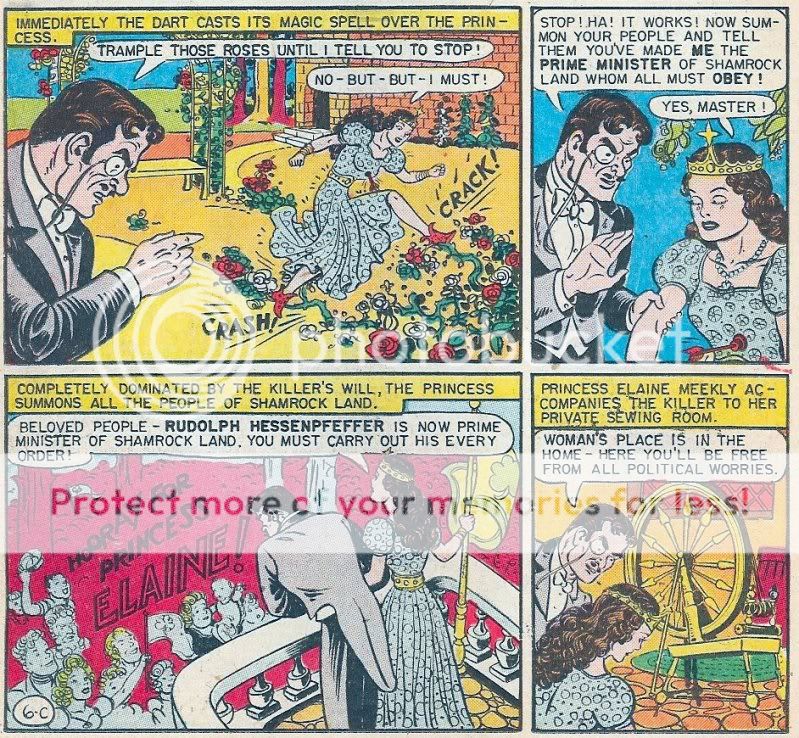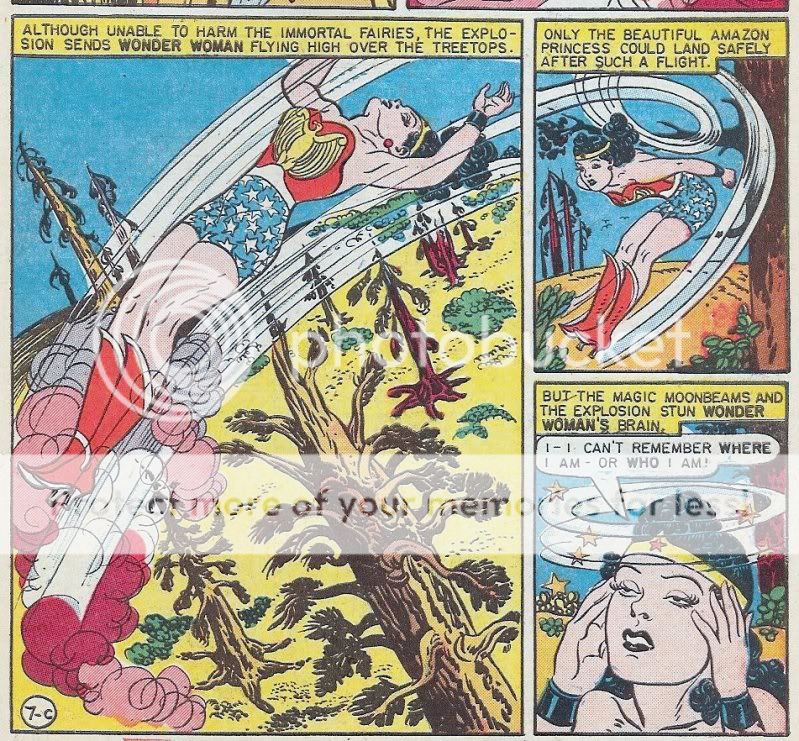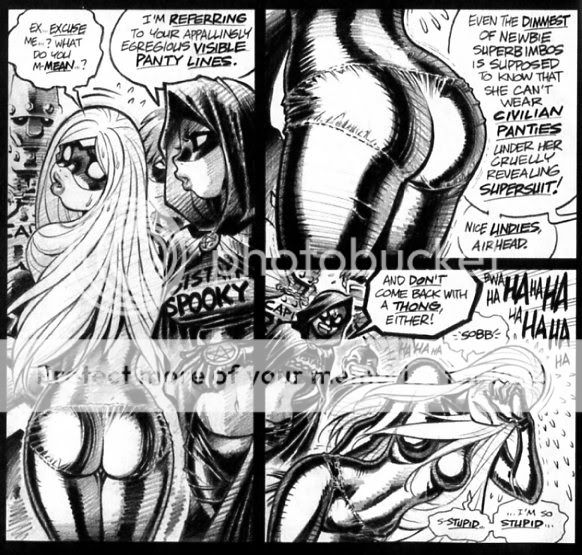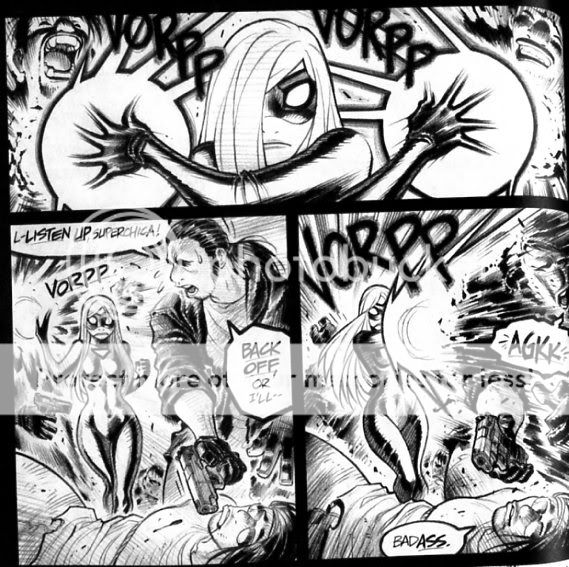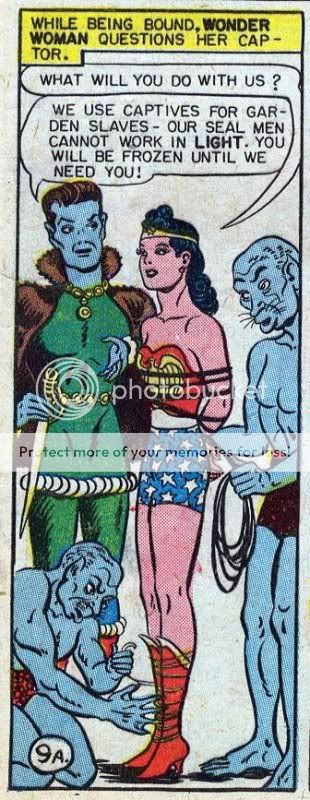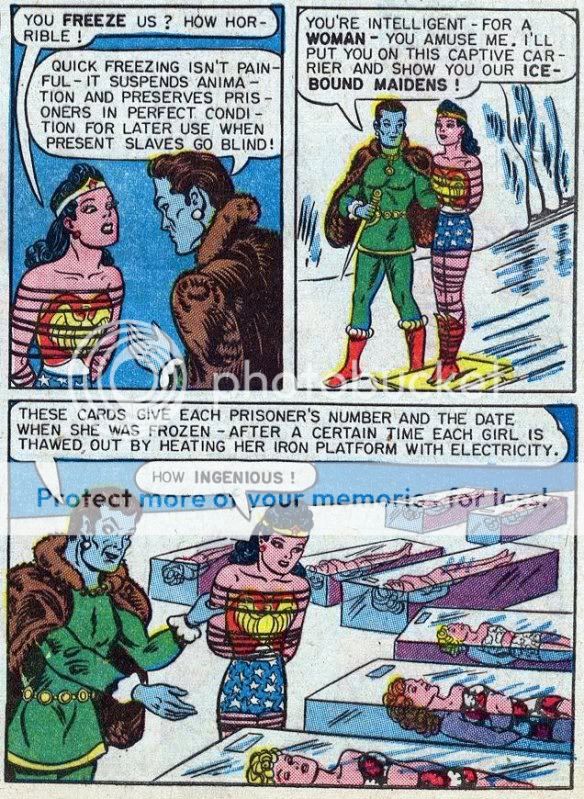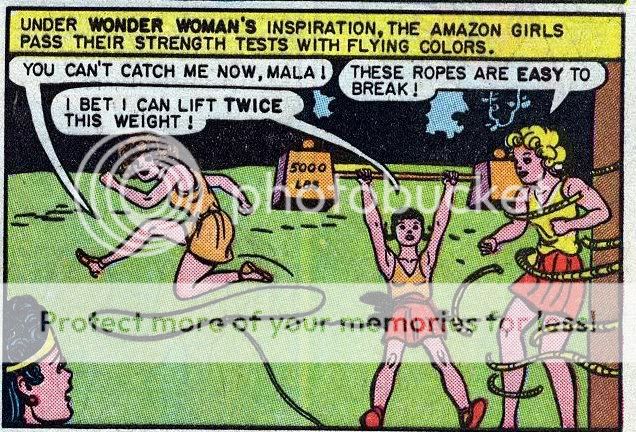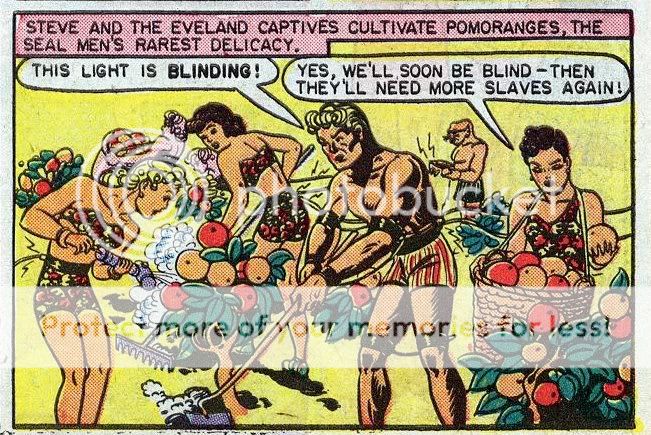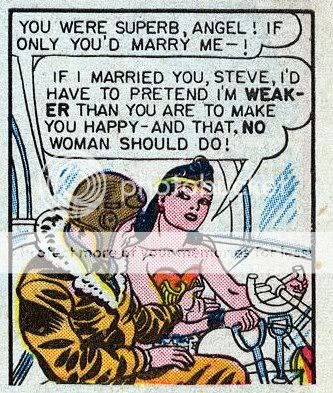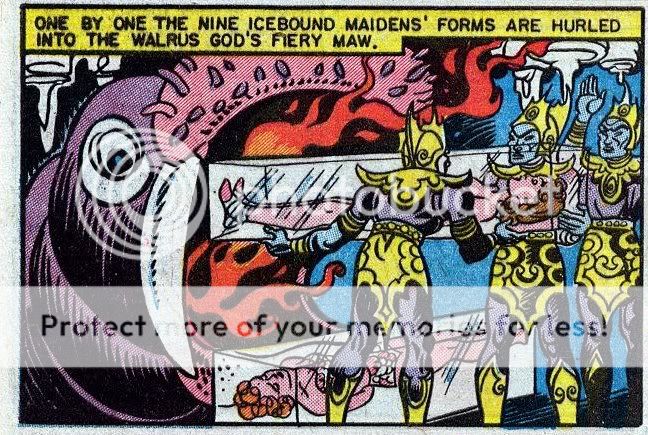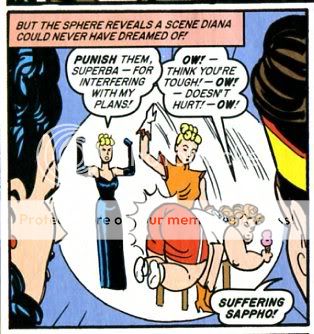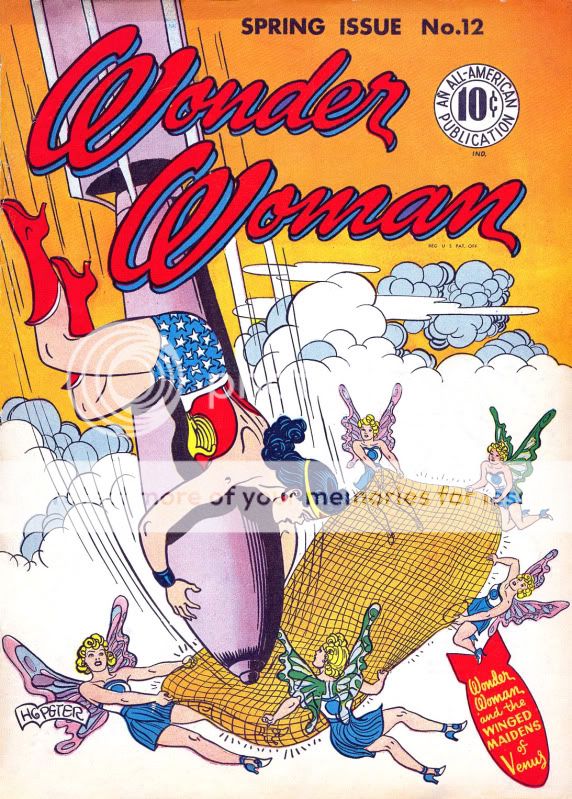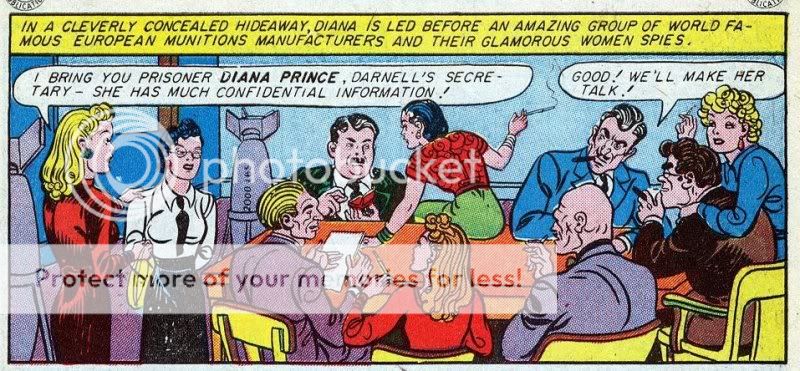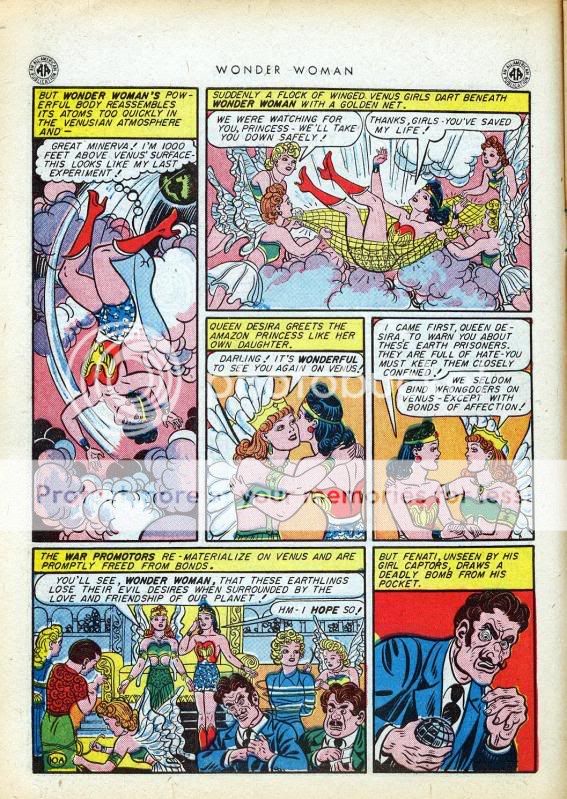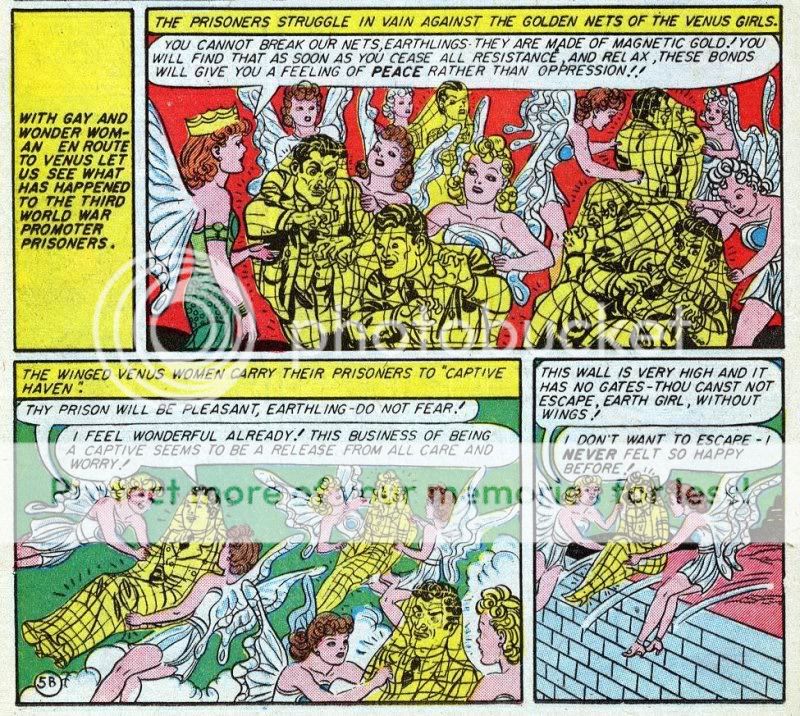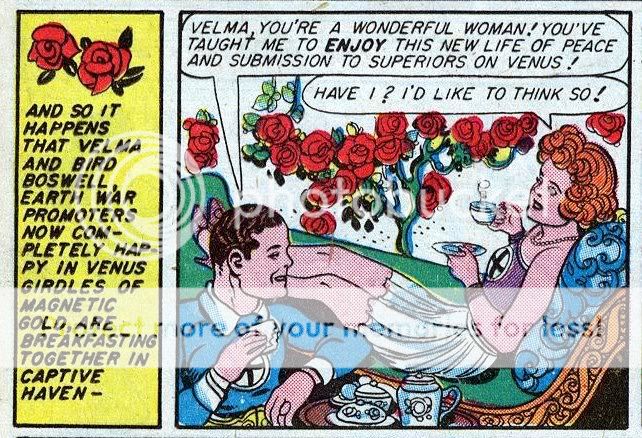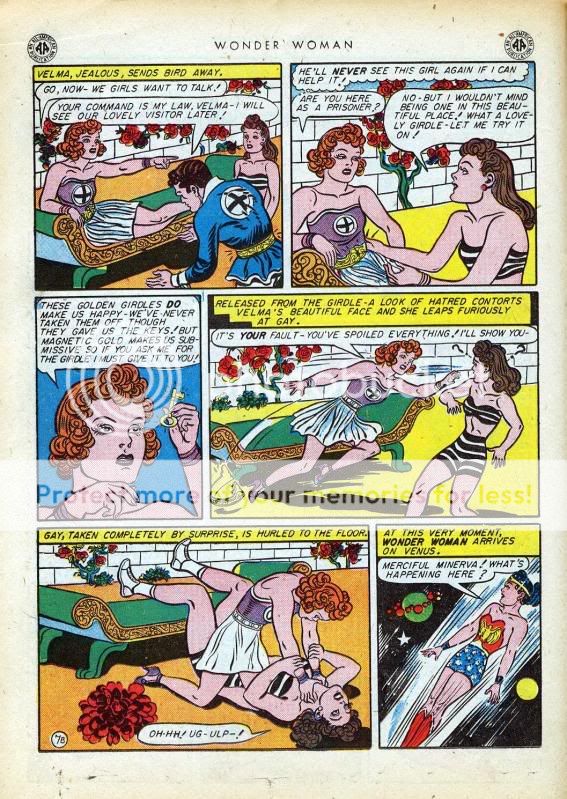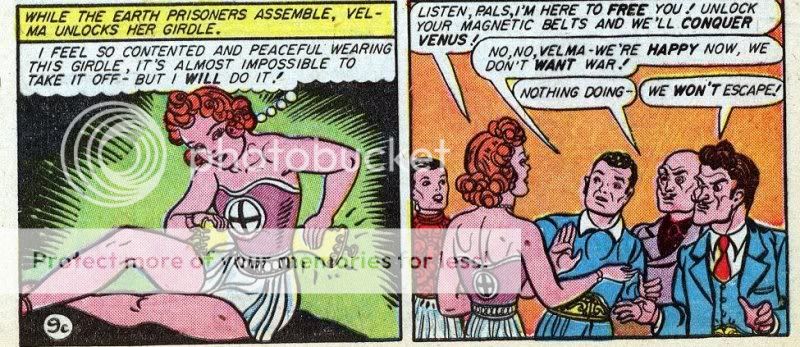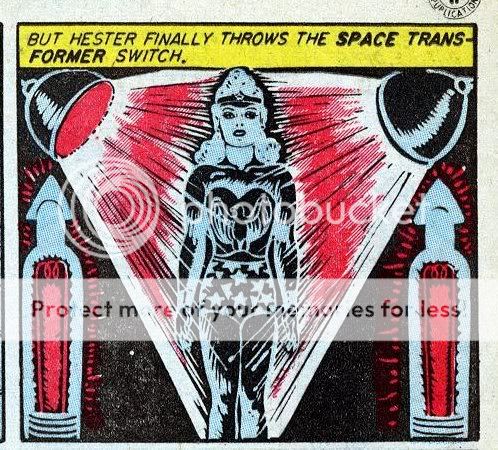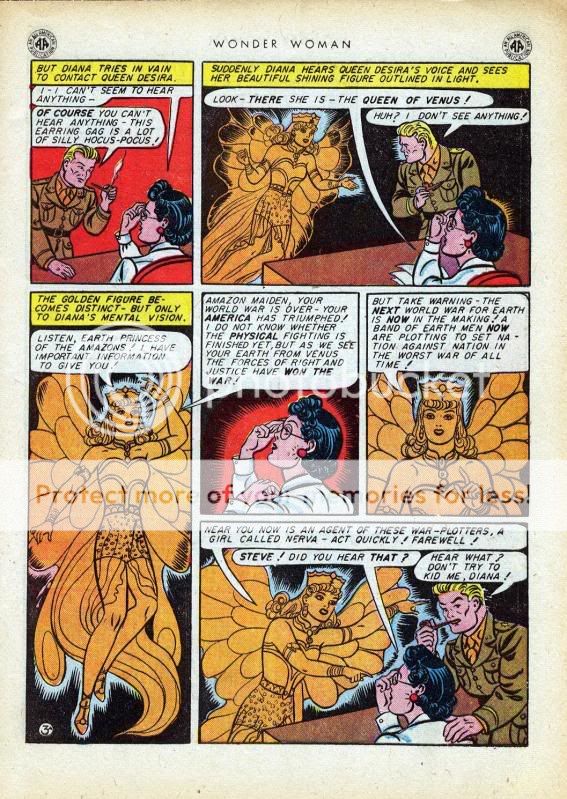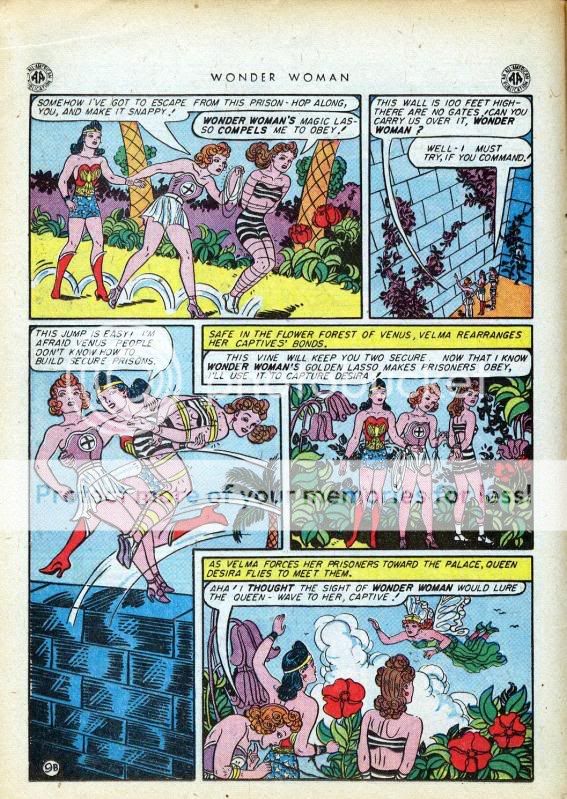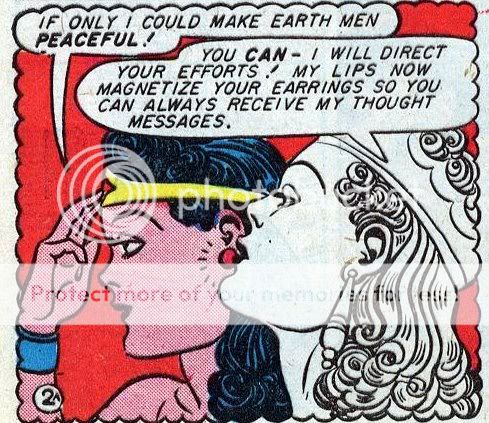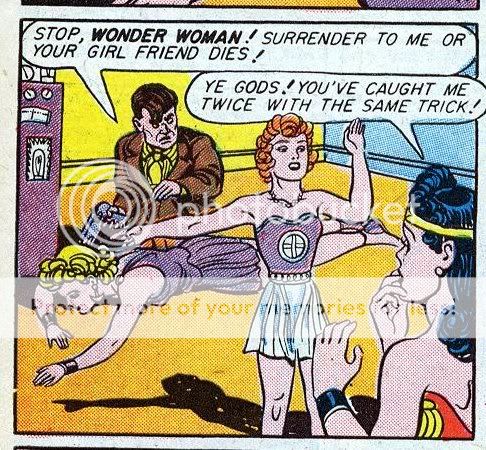As I said earlier in the week, Wonder Woman #14 was okay but not great. For this one, though, Marston and Peter are back to form, with a tale that starts right out with preposterous and just snowballs from there. You know you’re in for a ride when the coverpage features a tigeape….
And the splashpage features a flying fish with octopus tentacles being ridden by a knight.
So anyway, the story begins with a giant chunk of the planet Neptune falling to earth as a new continent. You’d think that such an apocalyptic event, probably heralding the end of life on earth as we know it, might be the basis for the entire comic that follows…but, nah, not really. Continents hitting the planet just cause a few buildings to shake; not a big deal really. Instead, the really cool adventure happens when we go to visit that new continent and discover that..well, see for yourself:
And furthermore:
You have to adore the way Diana looks all hunched up and startled when she falls into the water…and also the fish swimming by her as she changes to WW…and the purply swirls. Underwater scenes just really bring out some of Peter’s best work, I think because of the chance to do all the swirling patterns and lines…and the undersea creatures of course. What a perfectly beautiful page.
You’re probably wondering why on earth the ocean water has parted and formed giant walls. Have no fear, all is explained:
There are tons of pseudoscientific explanations just like that throughout this issue, and every one is a keeper. Where does Marston get this stuff? The man’s a genius, I tell you.
Anyway, no sooner has WW gotten the ship back afloat than the crew (including the Holiday Girls, who, as always, have come along on the dangerous military mission) are attacked by those octoflyingfish we saw on the splash page
WW and crew defeat the flying fish, which are controlled, as it turns out, by good looking guys from Neptune.
This is a lovely page, I think, by the by; I think it’s partially the color palette that gets me; all those oranges and yellow oranges. But I also like the way that it’s sparse but balanced. And, of course, the toothy flying fish floating off to the side at the bottom are pretty hysterical.
WW and company take the Neptunians back to their home continent (strangely undamaged by its trip through space,) and while chitchatting they discover why it is that the Neptunians are so mean and unpleasant:
I like the way Marston just has WW state flat out that men will just fight, fight, fight if there aren’t women around. And the Neptunian doesn’t even really contradict her; he just explains that there’s no war because most of the men are turned into robots. It’s moments like this that you realize that Marston never did have a moments doubt; there was never an instant where he thought, “You know, almost no one agrees with me…maybe it’s just not true that women should rule over men.” This was a guy who was very secure in his worldview.
Here’s another stellar page:
Again, there isn’t any one thing or panel in this page that leaps out at you, but it works as a lovely whole, with lots of active lines and a unified, pleasing color palette. The filigree in the background, much of it obscured by the word balloons, lends a subtle, baroque feel to the whole image. It’s pages like this that make me want to compare Peter to Winsor McCay; he’s not as explicit about it, but he really does, like McCay, seem to see the page as an aesthetic unit, and work with it as such. It’s not something that is done very often or very well, especially not in super-hero comics of this era.
Here’s another, maybe clearer example;
The net there is used as a design element; the mesh pattern flowing through the different panels gives a dynamic sense of movement and unity to the page. The spiraling and shifting pattern is emphasized by the simple tiered layout — which itself has a nice rhythm (long, short, short, long, long short.) I think Les Daniels said at some point that Peter had trouble with page design early in the WW run. If that was ever true (and I think there is something to it) it’s certainly not the case by this point.
All right; repressing the urge to just post every single page of this book now…they’re all pretty much amazing….repressing, repressing…okay, more or less successful. Let’s move on to another awesome pseudo-science explanation:
They turn men into machines by robbing them of salt, because salt is what gives you flavor, doncha know. But the best part is…it doesn’t work on women. And why not? Witness:
Again I ask…why isn’t DC taking these panels and printing them as posters, damn it?
The Neptunians are so terrified of women now that they make a pact with the U.S. offering to become a vassal state if the Americans will guarantee that no women can come onto the Neptunian continent. The U.S. agrees…and so to keep tabs on the devilish Neptunians, WW is forced…to wear drag. Of a sort. I’d wondered before if Marston ever provided examples of good-girl cross-dressing (he has several of his villainesses cross dress.) This issue has the closest we’ve gotten so far, as WW and the Holiday girls dress up as at least nominally male tigapes.
Not really conclusive, but maybe another datapoint to suggest that Marston didn’t seem to see cross-gender dressing as particularly or innately evil. And it’s certainly more evidence for the fact that he just found dressing up in general hot; the Tigeape costumes were first donned during a sorority hazing ritual, which is one of Marston’s favorite things. (HIs academic research involved sorority hazing rituals, so of course his interest was strictly scholarly. Of course.)
Also, add “furry” to Marston’s impressive list of kinks. Of course, furries weren’t even invented when WW was penned…but he Marston was a pioneer in this, as in many things….
The comic ends happily ever after when the Neptunians plot is foiled and the island is given over to women to govern.
If only our actual political leaders were that docile. Go forth, WW, and teach unto Dick Cheney the loving submission. Barack Obama too, just as long as I don’t have to read the slash.



